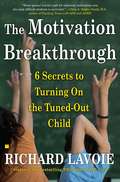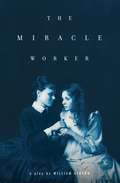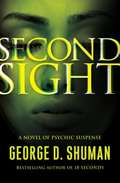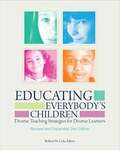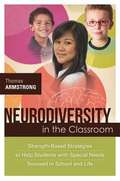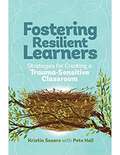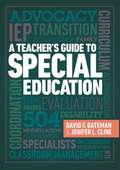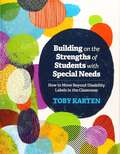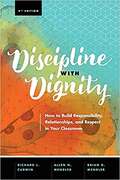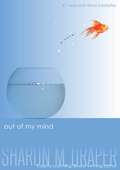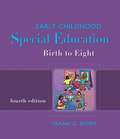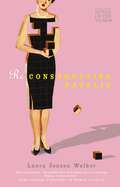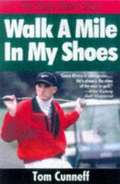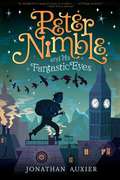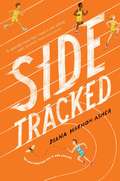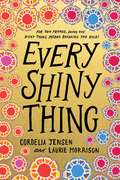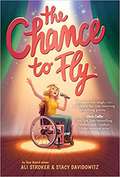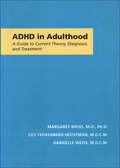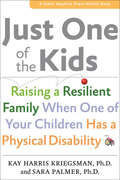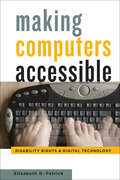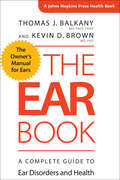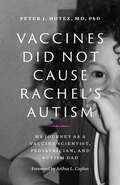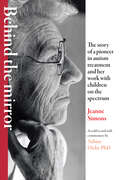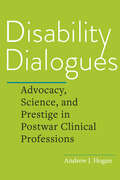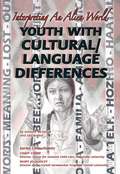- Table View
- List View
The Motivation Breakthrough: 6 Secrets to Turning On the Tuned-out Child
by Richard LavoieAny child can be motivated to learn. "If he only would apply himself..." "She can do it if she puts her mind to it." "He just doesn't seem to care." "She's just not trying." Motivation is the key to learning. But very few parents and teachers have an effective arsenal of techniques at their disposal. Enter educator and acclaimed author Rick Lavoie, who arms all those who deal with children with proven, effective tools and strategies they can use to encourage any child to learn and achieve success. Lavoie's practical, innovative approach begins with a quiz that helps a parent or teacher identify -- using six different possible models -- a child's motivational style. Is she motivated by power? Does he need prestige? Does praise mean a lot to this child? Does contact with other people inspire this child? Does he like to do projects? Does she enjoy receiving prizes? He then explores each motivational style in depth, presenting proven techniques, strategies, and scripts that can be used in the classroom and at home to break through a child's apathy and discouragement and inspire him to succeed and achieve. Along the way, Lavoie explodes some common myths about motivation: for instance, he demonstrates that rewards, punishment, and competition are not effective motivational tools. He gives specific advice throughout for parents and teachers of children with learning disabilities and provides detailed instructions for how to create a motivated classroom. He outlines the parent's role, the teacher's role, and suggests ways in which they can work together to encourage children to reach their potential. The book's final chapter, "What Does Madison Avenue Know...That Maple Street Elementary School Doesn't," reveals what parents and teachers can learn from some of the most powerful motivators in our children's world: advertisers. With empathy and understanding, backed by decades of experience in the classroom, Rick Lavoie gives parents and teachers the key to unlock any child's enthusiasm and responsiveness. The Motivation Breakthrough will revolutionize the way parents, teachers, and professionals reach out to and motivate all children.
The Miracle Worker: A Play
by William GibsonNO ONE COULD REACH HER Twelve-year-old Helen Keller lived in a prison of silence and darkness. Born deaf, blind, and mute, with no way to express herself or comprehend those around her, she flew into primal rages against anyone who tried to help her, fighting tooth and nail with a strength born of furious, unknowing desperation. Then Annie Sullivan came. Half-blind herself, but possessing an almost fanatical determination, she would begin a frightening and incredibly moving struggle to tame the wild girl no one could reach, and bring Helen into the world at last....
Second Sight: A Novel of Psychic Suspense
by George D. ShumanStunningly beautiful psychic Sherry Moore's world has been draped in darkness for as long as she can remember. Though she has been blind since childhood, her extraordinary gift for seeing the last eighteen seconds of a deceased person's memory has helped solve numerous crimes and save countless lives. Her life has been anything but normal, but because of her relationship with Brian Metcalf, the Navy SEAL she met during a dramatic rescue on Mount McKinley, Sherry has never been happier. Then her exposure to deadly radiation changes everything. Unnerved about the radiation's possible aftereffects and suffering from optical migraines, Sherry checks herself into the hospital to undergo tests. All seems normal until they wheel in the body of one Thomas Monahan. Vivid, terrifying images from his memory flood her thoughts the moment she grasps his hand. She feels a connection take hold as she thrashes about on the gurney, finally letting out a bloodcurdling scream. When Sherry next opens her eyes, for the first time in thirty-two years, she can see. They call it a miracle. But for Sherry life with sight proves to be more complicated. She has to navigate the world anew, troubled by the agonizing, unanswered question: Who was this man and how had he enabled her to regain her vision? Enlisting the help of retired Admiral Garland Brigham, her confidant and best friend, Sherry doggedly begins to unravel this complicated history and unearths some startling revelations, beginning with the work of Edward Case. Case is a man used to getting his way. The CEO of pharmaceutical giant Case & Kimble, he has the nation's elite on speed dial. But unsettling rumors have circulated for years about the genesis of the company's stratospheric success, questioning how this upstart firm has gained prominence and grown to be a monolithic institution worth billions of dollars. How its drugs always seem to make it onto the market before those of its competitors. If the secrets to C&K's dominance are ever made public, they will destroy the empire Case has so carefully constructed. And he will stop at nothing to keep his domain intact. Flush with pounding action and shocking twists, Second Sight is the riveting story of an astounding heroine who, in delving into the darkest corners of the pharmaceutical trade, risks her life to set right an injustice buried deep in the past.
Educating Everybody's Children: Diverse Teaching Strategies for Diverse Learners
by Robert W. ColeDesigned to promote reflection, discussion, and action among the entire learning community, Educating Everybody's Children encapsulates what research has revealed about successfully addressing the needs of students from economically, ethnically, culturally, and linguistically diverse groups and identifies a wide range of effective principles and instructional strategies. <p><p> Although good teaching works well with all students, educators must develop an extensive repertoire of instructional tools to meet the varying needs of students from diverse backgrounds. Those tools and the knowledge base behind them are the foundation of this expanded and revised second edition of Educating Everybody's Children. Each strategy discussed in the book includes classroom examples and a list of the research studies that support it. <p><p> The most important thing we have learned as a result of the education reform movement is that student achievement stands or falls on the motivation and skills of teachers. We must ensure that all teachers are capable of delivering a standards‑based curriculum that describes what students should know and be able to do, and that these standards are delivered by means of a rich and engaging "pedagogy of plenty." By these two acts we can ensure that all schools will be ready and able to educate everybody's children.
Neurodiversity in the Classroom: Strength-Based Strategies to Help Students with Special Needs Succeed in School and Life
by Thomas ArmstrongA new concept on human diversity has emerged over the past 10 years that promises to revolutionize the way educators provide services to students with special needs: neurodiversity. Just as we celebrate diversity in nature and cultures, so too do we need to honor the diversity of brains among our students who learn, think, and behave differently. In Neurodiversity in the Classroom, best-selling author Thomas Armstrong argues that we should embrace the strengths of such neurodiverse students to help them and their neurotypical peers thrive in school and beyond. This innovative book focuses on five categories of special needs: learning disabilities, attention deficit hyperactivity disorder, autism, intellectual disabilities, and emotional and behavioral disorders.
Fostering Resilient Learners: Strategies for Creating a Trauma-sensitive Classroom
by Kristin Souers Pete HallIn this galvanizing book for all educators, Kristin Souers and Pete Hall explore an urgent and growing issue--childhood trauma--and its profound effect on learning and teaching. <P><P> Grounded in research and the authors' experience working with trauma-affected students and their teachers, Fostering Resilient Learners will help you cultivate a trauma-sensitive learning environment for students across all content areas, grade levels, and educational settings. The authors--a mental health therapist and a veteran principal--provide proven, reliable strategies to help you <P><P> * Understand what trauma is and how it hinders the learning, motivation, and success of all students in the classroom. * Build strong relationships and create a safe space to enable students to learn at high levels. * Adopt a strengths-based approach that leads you to recalibrate how you view destructive student behaviors and to perceive what students need to break negative cycles. * Head off frustration and burnout with essential self-care techniques that will help you and your students flourish. <P><P> Each chapter also includes questions and exercises to encourage reflection and extension of the ideas in this book. As an educator, you face the impact of trauma in the classroom every day. Let this book be your guide to seeking solutions rather than dwelling on problems, to building relationships that allow students to grow, thrive, and--most assuredly--learn at high levels.
A Teacher's Guide to Special Education
by David Bateman Jenifer ClineDespite the prevalence of students with disabilities in the general education classroom, few teachers receive training on how to meet these students' needs or how to navigate Despite the prevalence of students with disabilities in the general education classroom, few teachers receive training on how to meet these students' needs or how to navigate the legally mandated processes enumerated in the Individuals with Disabilities Education Act (IDEA). What is their role? What are their responsibilities? What are the roles and rights of parents? And what must all teachers do to ensure that students with disabilities and other special needs receive the quality education they're entitled to? In this practical reference, David F. Bateman--bestselling author of A Principal's Guide to Special Education --and special education administrator Jenifer L. Cline clarify what general education teachers need to know about special education law and processes and provide a guide to instructional best practices for the inclusive classroom. Topics covered include The pre-referral, referral, and evaluation processes Individualized education programs (IEPs) and the parties involved Accommodations for students who do not quality for special education, including those covered by Section 504 Transition from preK to K-12 and from high school to postschool life Classroom management and student behavior Educational frameworks, instructional strategies, and service delivery options Assessment, grades, graduation, and diplomas The breadth of coverage in this book, along with its practical examples, action steps, and appendixes covering key terms and definitions will provide the foundation all K-12 teachers need to successfully instruct and support students receiving special education services. It's an indispensable resource for every general education classroom. the legally mandated processes enumerated in the Individuals with Disabilities Education Act (IDEA). What is their role? What are their responsibilities? What are the roles and rights of parents? And what must all teachers do to ensure that students with disabilities and other special needs receive the quality education they're entitled to? In this practical reference, David F. Bateman--bestselling author of A Principal's Guide to Special Education --and special education administrator Jenifer L. Cline clarify what general education teachers need to know about special education law and processes and provide a guide to instructional best practices for the inclusive classroom. Topics covered include The pre-referral, referral, and evaluation processes Individualized education programs (IEPs) and the parties involved Accommodations for students who do not quality for special education, including those covered by Section 504 Transition from preK to K-12 and from high school to postschool life Classroom management and student behavior Educational frameworks, instructional strategies, and service delivery options Assessment, grades, graduation, and diplomas The breadth of coverage in this book, along with its practical examples, action steps, and appendixes covering key terms and definitions will provide the foundation all K-12 teachers need to successfully instruct and support students receiving special education services. It's an indispensable resource for every general education classroom.
Building on the Strengths of Students with Special Needs: How to Move Beyond Disability Labels in the Classroom
by Toby KartenAs a must-have reference for busy teachers with little special education training, this book supplies classroom-tested instructional strategies that address the characteristics of and challenges faced by students with special needs. Dozens of differentiated strategies target teachers’ anxieties and provide responsive interventions that can be used to address specifics of IEPs and learning plans. <p><p>With Building on the Strengths of Students with Special Needs, special education expert Toby Karten focuses on specific disabilities and inclusive curriculum scenarios for learners in K–12 environments. She offers valuable advice on how to prevent labels from capping student potential and encouragement to help teachers continually improve learner outcomes. <p><p>By highlighting more than a dozen disability labels, this resource walks teachers through the process of reinforcing, motivating, scaffolding, and planning for instruction that targets learners of all ability levels. Included are details relevant to each disability: <p>•Possible Causes <p>•Characteristics and Strengths <p>•Classroom Implications <p>•Inclusion Strategies <p><p>Typical instruction needs to match the diversity of atypical learners without viewing any disability as a barrier that impedes student achievement. Teachers must not only learn how to differentiate their approach and target specific student strengths but also maintain a positive attitude and belief that all students are capable of achieving self-efficacy.
Discipline With Dignity, 4th Edition: How To Build Responsibility, Relationships, And Respect In Your Classroom
by Richard L. Curwin Allen N. Mendler Brian D. MendlerIn this revised and updated 4th edition, Discipline with Dignity provides in-depth guidance for implementing a proven approach to classroom management that can help students make better choices and teachers be more effective. Emphasizing the importance of mutual respect and self-control, the authors offer specific strategies and techniques for building strong relationships with disruptive students and countering the toxic social circumstances that affect many of them, including dysfunctional families, gangs, and poverty. Educators at all levels can learn The difference between formal and informal discipline systems and when to use each. The role of values, rules, and consequences. How to address the underlying causes of discipline problems that occur both in and out of school. What teachers can do to defuse or prevent classroom disruptions and disrespectful behavior without removing students from the classroom. Why traditional approaches such as threats, punishments, and rewards are ineffective—and what to do instead. How to use relevance, teacher enthusiasm, choice, and other elements of curriculum and instruction to motivate students. How to reduce both teacher and student stress that can trigger power struggles. With dozens of specific examples of student-teacher interactions, Discipline with Dignity illustrates what you can do—and not do—to make the classroom a place where students learn and teachers maintain control in a nonconfrontational way. The goal is success for all, in schools that thrive.
Out of My Mind (The Out of My Mind Series)
by Sharon M. DraperA New York Times bestseller for three years and counting! &“A gutsy, candid, and compelling story. It speaks volumes.&” —School Library Journal (starred review) &“Unflinching and realistic.&” —Kirkus Reviews (starred review) From award-winning author Sharon Draper comes a story that will forever change how we all look at anyone with a disability, perfect for fans of RJ Palacio&’s Wonder.Eleven-year-old Melody is not like most people. She can&’t walk. She can&’t talk. She can&’t write. All because she has cerebral palsy. But she also has a photographic memory; she can remember every detail of everything she has ever experienced. She&’s the smartest kid in her whole school, but NO ONE knows it. Most people—her teachers, her doctors, her classmates—dismiss her as mentally challenged because she can&’t tell them otherwise. But Melody refuses to be defined by her disability. And she&’s determined to let everyone know it…somehow.
Early Childhood Special Education: Birth to Eight
by Frank G. BoweEarly Childhood Special Education: Birth to Eight is now available in the 4th edition. The 4th edition expands coverage of pre-academics and academics, responding to No Child Left Behind and IDEA 2004. The five key areas of development: communication, physical, cognitive, social/emotional, and adaptive, all include updated coverage. This is the only text on the market that addresses all of early childhood, age birth through eight, and all of early childhood special education. The text also takes into consideration that early childhood special education is a field driven by federal law, and contains complete coverage of those laws. Each chapter has opening questions, ending questions, and activities to help the student learn and retain the information. There is a full chapter devoted to research, and an online companion that serves to supplement the text and offers up to the minute content updates. The student will appreciate the outstanding readability of this updated, authoritative text.
Reconstructing Natalie (Women Of Faith Ser.)
by Laura Jensen WalkerNatalie faces breast cancer with her friends, humor, girlfriends, and is a survivor. This is a story full of laughter, tears, hope and humor....<P><P> Natalie Moore is having a great time living her life until she confronts something that too many women fight in today's society: breast cancer. At twenty-seven years old, Natalie walks us through the emotions and reality of having breast cancer while she loses her boyfriend, her fair, and both of her breasts. She also shows us how to cope, as she makes new friends, gets reconstructive surgery that even enhances her figure, finds new love in unexpected places, and makes major changes in her life. Natalie learns to place importance in people in attributes other than the obvious and physical as she works on reconstructing herself.
Walk a Mile in My Shoes
by Tom CunneffRookie golfer Casey Martin, who suffers from a debilitating disorder that causes him to become easily fatigued, has been in the headlines lately with his lawsuit against the PGA. This book tells of the obstacles that Martin has had to overcome in his lifetime to get to where he is now.
Peter Nimble and His Fantastic Eyes
by Jonathan AuxierRaised to be a thief, blind orphan Peter Nimble, age ten, steals from a mysterious stranger three pairs of magical eyes that lead him to a hidden island where he must decide to become a hero or resume his life of crime.
Sidetracked
by Diana Asher<p>If middle school were a race, Joseph Friedman wouldn't even be in last place--he'd be on the sidelines. With an overactive mind and phobias of everything from hard-boiled eggs to gargoyles, he struggles to understand his classes, let alone his fellow classmates. So he spends most of his time avoiding school bully Charlie Kastner and hiding out in the Resource Room, a safe place for misfit kids like him. <p>But then, on the first day of seventh grade, two important things happen. First, his Resource Room teacher encourages (i.e., practically forces) him to join the school track team, and second, he meets Heather, a crazy-fast runner who isn't going to be pushed around by Charlie Kastner or anybody else. <p>With a new friend and a new team, Joseph finds himself off the sidelines and in the race (quite literally) for the first time. Is he a good runner? Well, no, he's terrible. But the funny thing about running is, once you're in the race, anything can happen.</p>
Every Shiny Thing
by Cordelia Jensen Laurie MorrisonIn this beautifully constructed middle-grade novel, told half in prose and half in verse, Lauren prides herself on being a good sister, and Sierra is used to taking care of her mom. When Lauren’s parents send her brother to a therapeutic boarding school for teens on the autism spectrum and Sierra moves to a foster home in Lauren’s wealthy neighborhood, both girls are lost until they find a deep bond with each other. But when Lauren recruits Sierra to help with a Robin Hood scheme to raise money for autistic kids who don’t have her family’s resources, Sierra has a lot to lose if the plan goes wrong. Lauren must learn that having good intentions isn’t all that matters when you battle injustice, and Sierra needs to realize that sometimes, the person you need to take care of is yourself.
The Chance to Fly
by Ali StrokerA heartfelt middle-grade novel about a theater-loving girl who uses a wheelchair for mobility and her quest to defy expectations—and gravity—from Tony award–winning actress Ali Stroker and Stacy Davidowitz <p><p> Thirteen-year-old Nat Beacon loves a lot of things: her dog Warbucks, her best friend Chloe, and competing on her wheelchair racing team, the Zoomers, to name a few. But there’s one thing she’s absolutely OBSESSED with: MUSICALS! From Hamilton to Les Mis, there’s not a cast album she hasn’t memorized and belted along to. She’s never actually been in a musical though, or even seen an actor who uses a wheelchair for mobility on stage. Would someone like Nat ever get cast? <p><p> But when Nat’s family moves from California to New Jersey, Nat stumbles upon auditions for a kids’ production of Wicked, one of her favorite musicals ever! And she gets into the ensemble! The other cast members are super cool and inclusive (well, most of them)— especially Malik, the male lead and cutest boy Nat’s ever seen. But when things go awry a week before opening night, will Nat be able to cast her fears and insecurities aside and “Defy Gravity” in every sense of the song title?
ADHD in Adulthood: A Guide to Current Theory, Diagnosis, and Treatment (A Johns Hopkins Press Health Book)
by Margaret Weiss Lily Trokenberg Hechtman Gabrielle WeissHow does ADHD manifest itself in adult life? In general, the authors write, hyperactivity tends to diminish with age, impulsivity changes quality, and attention problems remain the same although they may become more disabling as organizational demands increase. The authors carefully answer the questions often posed by professionals and patients about these symptoms and other issues. They describe the diagnostic interview and the use of rating scales and include examples of the scales. They also provide a well-balanced review of associated psychiatric conditions, such as mood and anxiety disorders, Tourette's syndrome, oppositional and conduct problems, and substance abuse. Descriptions of all the primary approaches to treatment—medication, psychological therapies, and environmental restructuring—include vivid case examples.
Just One of the Kids: Raising a Resilient Family When One of Your Children Has a Physical Disability (A Johns Hopkins Press Health Book)
by Kay Harris Kriegsman Sara PalmerSupporting and encouraging all members of the family when a child has a physical disability.If you have a child with a physical disability, how can you plan your family’s life in a way that is inclusive for everyone? What can you do to create a family where every member pulls his or her own weight (in appropriate measure), meets challenges, and has moments in the spotlight along the way? Most parents of a child who has a physical disability want their child to have fun, be responsible, make friends, and take acceptable risks—in short, to feel like "just one of the kids"—and they want to make sure that the needs of the whole family are met, too.Just One of the Kids is designed to help parents focus not on what could have been but instead on what can be, so that they, their children, and the grandparents thrive as individuals and as a family. The advice from psychologists Kay Harris Kriegsman and Sara Palmer is valuable for any family with children who have a physical disability, from any cause. Their warm and encouraging book is full of family stories, tips, and tools. Parents of children with physical disabilities can help them develop the skills needed to meet life’s challenges and launch into independence. Parents, building on that foundation and acknowledging each person’s contributions, interests, and aspirations, create an inclusive and resilient family.
Making Computers Accessible: Disability Rights and Digital Technology
by Elizabeth R. PetrickThe revolution in accessible computer technology was fueled by disability activism, the interactive nature of personal computers, and changing public policy.In 1974, not long after developing the first universal optical character recognition technology, Raymond Kurzweil struck up a conversation with a blind man on a flight. Kurzweil explained that he was searching for a use for his new software. The blind man expressed interest: One of the frustrating obstacles that blind people grappled with, he said, was that no computer program could translate text into speech. Inspired by this chance meeting, Kurzweil decided that he must put his new innovation to work to "overcome this principal handicap of blindness." By 1976, he had built a working prototype, which he dubbed the Kurzweil Reading Machine.This type of innovation demonstrated the possibilities of computers to dramatically improve the lives of people living with disabilities. In Making Computers Accessible, Elizabeth R. Petrick tells the compelling story of how computer engineers and corporations gradually became aware of the need to make computers accessible for all people. Motivated by user feedback and prompted by legislation such as the Americans with Disabilities Act, which offered the promise of equal rights via technological accommodation, companies developed sophisticated computerized devices and software to bridge the accessibility gap. People with disabilities, Petrick argues, are paradigmatic computer users, demonstrating the personal computer’s potential to augment human abilities and provide for new forms of social, professional, and political participation. Bridging the history of technology, science and technology studies, and disability studies, this book traces the psychological, cultural, and economic evolution of a consumer culture aimed at individuals with disabilities, who increasingly rely on personal computers to make their lives richer and more interconnected.
The Ear Book: A Complete Guide to Ear Disorders and Health (A Johns Hopkins Press Health)
by Thomas J. Balkany Kevin D. Brown“Everything you ever wanted to know about ears from two outstanding physician scientists. I loved this book!” —Donna Shalala, Former U.S. Secretary of Health and Human ServicesIn The Ear Book, Drs. Thomas J. Balkany and Kevin D. Brown, recognized experts on ears and hearing, explain how the anatomy of the ear facilitates hearing and balance and then examine the causes, symptoms, and treatment of common problems of the outer, middle, and inner ear. Their explanations take the mystery out of hearing aids, the proper care of ears, and how the pressurized conditions of scuba diving and air travel affect the ears. And they debunk ear-related myths—from the notion that exposure to loud noise strengthens the ear to the idea that tinnitus can be cured with nutrients—and urge readers to stop using ear candling or Q-tips to get rid of wax.Drs. Balkany and Brown address such common questions as: Can dizziness be cured? How loud is too loud? Why do my ears ring? Do cochlear implants work for nerve deafness? What promise do innovations in gene therapy and stem cell therapy hold for the future? Fully illustrated and including helpful tables, hearing preservation tips, a glossary of terms, lists of ear medications and resources, and suggestions for further reading, The Ear Book is sure to be a welcome family guide.“This book is gem for everyone with questions about their ears. I highly recommend it—especially the chapter on Myths of the Ear!” —D. Bradley Welling, MD, PhD, Harvard University Department of Otolaryngology
Vaccines Did Not Cause Rachel's Autism: My Journey as a Vaccine Scientist, Pediatrician, and Autism Dad
by Peter J. HotezInternationally renowned medical scientist, frequent media contributor, and autism dad Dr. Peter J. Hotez explains why vaccines do not cause autism.In 1994, Peter J. Hotez's nineteen-month-old daughter, Rachel, was diagnosed with autism. Dr. Hotez, a pediatrician-scientist who develops vaccines for neglected tropical diseases affecting the world's poorest people, became troubled by the decades-long rise of the influential anti-vaccine community and its inescapable narrative around childhood vaccines and autism. In Vaccines Did Not Cause Rachel's Autism, Hotez draws on his experiences as a pediatrician, vaccine scientist, and father of an autistic child. Outlining the arguments on both sides of the debate, he examines the science that refutes the concerns of the anti-vaccine movement, debunks current conspiracy theories alleging a cover-up by the Centers for Disease Control and Prevention, and critiques the scientific community's failure to effectively communicate the facts about vaccines and autism to the general public, all while sharing his very personal story of raising a now-adult daughter with autism.A uniquely authoritative account, this important book persuasively provides evidence for the genetic basis of autism and illustrates how the neurodevelopmental pathways of autism are under way before birth. Dr. Hotez reminds readers of the many victories of vaccines over disease while warning about the growing dangers of the anti-vaccine movement, especially in the United States and Europe. Now, with the anti-vaccine movement reenergized in our COVID-19 era, this book is especially timely. Vaccines Did Not Cause Rachel's Autism is a must-read for parent groups, child advocates, teachers, health-care providers, government policymakers, health and science policy experts, and anyone caring for a family member or friend with autism."When Peter Hotez—an erudite, highly trained scientist who is a true hero for his work in saving the world's poor and downtrodden—shares his knowledge and clinical insights along with his parental experience, when his beliefs in the value of what he does are put to the test of a life guiding his own child's challenges, then you must pay attention. You should. This book brings to an end the link between autism and vaccination."—from the foreword by Arthur L. Caplan, NYU School of Medicine
Behind the Mirror: The Story of a Pioneer in Autism Treatment and Her Work with Children on the Spectrum
by Jeanne Simons Sabine OishiThe life story of Jeanne Simons, whose own autism informed her pioneering work with autistic children.Jeanne Simons devoted her career as a social worker and educator to the study, treatment, and care of children with autism. In 1955, she established the Linwood Children's Center in Ellicott City, Maryland, one of the first schools dedicated to children with autism. Her Linwood Model, developed there, was widely adopted and still forms the basis for a variety of autism intervention techniques. Incredibly—although unknown at the time—Jeanne was herself autistic. Behind the Mirror reveals the remarkable tale of this trailblazer and how she thought, felt, and experienced the world around her. With moving immediacy, Jeanne tells her life story to developmental psychologist, friend, and collaborator Sabine Oishi. Jeanne's unique experience is supplemented by commentary from Dr. Oishi, who explains the importance of key biographical details and fills in additional information about the diagnosis and treatment of autism. Enhanced with a photo gallery, a look at new approaches to the education of children with autism, and a history of Linwood since its founding, the book also contains a foreword, an afterword, and an appendix by James C. Harris, MD, the past director of child psychiatry at Johns Hopkins University School of Medicine and the founder of its autism clinic. Demystifying the experience of autism, Behind the Mirror is a groundbreaking account of possibilities and hope.
Disability Dialogues: Advocacy, Science, and Prestige in Postwar Clinical Professions
by Andrew J. HoganA historical look at how activists influenced the adoption of more positive, inclusive, and sociopolitical views of disability.Disability activism has fundamentally changed American society for the better—and along with it, the views and practices of many clinical professionals. After 1945, disability self-advocates and family advocates pushed for the inclusion of more positive, inclusive, and sociopolitical perspectives on disability in clinical research, training, and practice. In Disability Dialogues, Andrew J. Hogan highlights the contributions of disabled people—along with their family members and other allies—in changing clinical understandings and approaches to disability.Hogan examines the evolving medical, social, and political engagement of three postwar professions—clinical psychology, pediatrics, and genetic counseling—with disability and disability-related advocacy. Professionals in these fields historically resisted adopting a more inclusive and accepting perspective on people with disabilities primarily due to concerns about professional role, identity, and prestige. In response to the work of disability activists, however, these attitudes gradually began to change. Disability Dialogues provides an important contribution to historical, sociological, and bioethical accounts of disability and clinical professionalization. Moving beyond advocacy alone, Hogan makes the case for why present-day clinical professional fields need to better recruit and support disabled practitioners. Disabled clinicians are uniquely positioned to combine biomedical expertise with their lived experiences of disability and encourage greater tolerance for disabilities among their colleagues, students, and institutions.
Youth with Cultural/Language Differences: Interpreting an Alien World
by Kenneth Mcintosh Ida WalkerTanya Begay hates life in Los Angeles, so different from Navajo Nation where she grew up. At her grandfather's urging, she tries to help others in the city--including an Afghan immigrant struggling to learn English and a Guatemalan girl caught up in gang violence. The lives of these three girls from three different cultures collide, changing each of their destinies. Along the way, they learn a whole lot about themselves and their cultures, their differences and their similarities.
